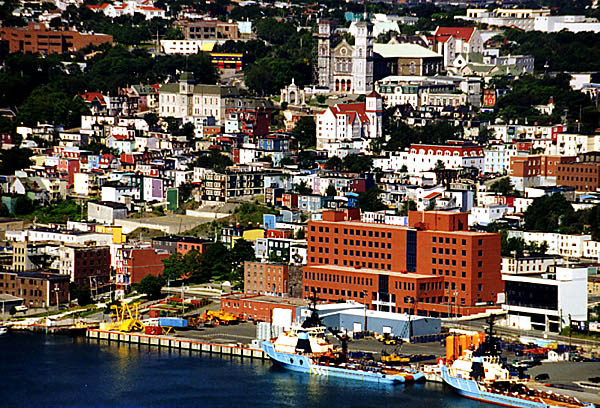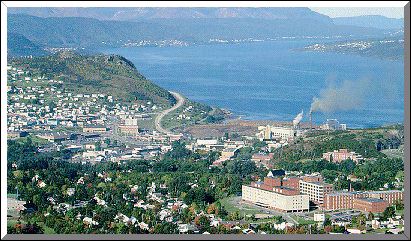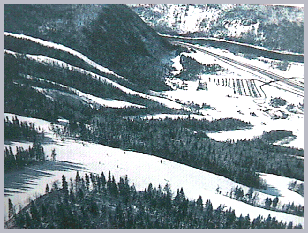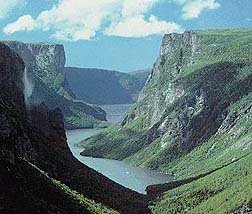 Welcome to Newfoundland and Labrador
Welcome to Newfoundland and Labrador

 Welcome to Newfoundland and Labrador
Welcome to Newfoundland and Labrador




Links • Folklore • Premiers • Land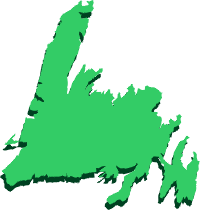 Marks • Newfoundland Map
Marks • Newfoundland Map

Newfoundland and Labrador is the easternmost province of Canada. It is also Canada’s newest province, having joined in 1949. The province has two sections: Newfoundland, which is an island, and Labrador, on the mainland of Canada. From 1927 to 1965 the name Newfoundland was used both for the island and for the entire province. In 1965 the province’s name was changed to Newfoundland and Labrador. Labrador is bounded by Québec province on the south, west, and north; by the Atlantic Ocean on the east; and by the Strait of Belle Isle on the southeast. Newfoundland is bordered by the Atlantic Ocean on the east and south, by the Gulf of St. Lawrence on the west, and by the Strait of Belle Isle on the north.St. John’s is the provincial capital and largest city. Also contained in the history is the Cabot Tower which is a good site to visit while on vaction.
The province is a land of rugged beauty. Picturesque fishing villages dot the shores and the outlying islands. Vast tracts of untamed wilderness cover the interior of Newfoundland and almost all of Labrador, a land of tundra, ice, and barren rocks. The first use of the name Newfoundland was in 1497, in an English registry recording the discovery of Terra Nova, or the new found land.
Newfoundland has fewer species of animals than the mainland. Among the animals native to the island are the black bear, woodland caribou, otter, muskrat, fox, and lynx. Moose, which were introduced to the island early in the 20th century, are fairly numerous. Most of the animals found in Newfoundland are also found in Labrador. In addition, Labrador has such animals as the mink, wolverine, wolf, and Barren Ground caribou. Birds found all year round in the province are the spruce partridge, ptarmigan, and osprey. Many varieties of ducks and geese inhabit the province in summer.
If you are looking for a vacation, there are lots of places to spend them in Newfoundland. For a winter vacation, there is Marble Mountain. Looking for a unique winter vacation destination? Come see what is in our backyards. Nestled at the foothills of the Appalachia Mountains, in the scenic Humber Valley, you will find Marble Mountain. A mere 45-minute drive from the Stephenville Airport and a five-minute drive outside of Corner Brook, Newfoundland's second largest city. At the summit of the hill you will be 1600 feet above the banks of the Humber River, higher than the world’s tallest building. You are truly on top of the world! There is 16 feet of natural snowfall, on average, and when Mother Nature takes a break, we rely on state-of-the-art snowmaking equipment. Translation: no downtime for the mountain.
For a beautiful scenic summer vacation one spot is Gros Morne National Park located on the Northern Peninsula. Route 431will take you to Trout River and the Tablelands, while Route 430 continues into the northern section of the park. On Route 431 is Lomond River Campground, one of five campgrounds in Gros Morne National Park. It is situated in the East Arm of Bonne Bay. Anglers will find Atlantic salmon in this scheduled river and large schools of mackerel in the bay itself. The next community, Glenburnie, is named after the Scot who first settled there. Continue on to the coastal settlement of Trout River, which has an excellent sandy beach. The magnificent views on this part of the coast and the startling geology of the nearby Tablelands make this area a must-see part of the park. Trails explore the lunar-like landscape of the Tablelands and the ancient volcanic formations along the Green Gardens Trail.
For further information to where to take your vacation in Newfoundland and Labrador, please visit The Newfoundland and Labrador Department of Tourism
.St.John's
Corner Brook
Marble Mountain
Grose Morne National Park
Cabot Tower
